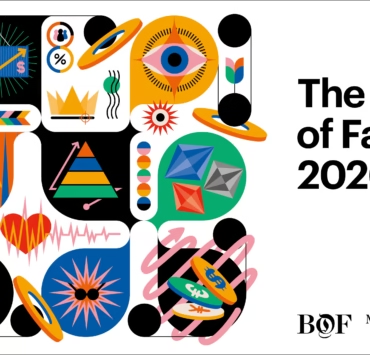HOW CHINA’S YOUNGEST CONSUMERS ARE RESHAPING LUXURY: GEN Z & ALPHA FUEL THE RISE OF LOCAL PREMIUM BRANDS

president LUXONOMY™ Group
China’s luxury market is living through a historic shift. After two turbulent years, its youngest consumers — especially Generation Z and Alpha — are steering a transformation that global brands can no longer overlook. They are not merely buying European heritage houses; they are building an ecosystem where domestic luxury, technology and cultural identity merge seamlessly.
A new sensibility: less logo, more cultural authenticity
Young Chinese consumers favor a different type of prestige. They value:
- Contemporary reinterpretations of Chinese heritage.
- Symbolic convergence between tradition, innovation and everyday functionality.
- Ethical and environmental coherence.
- The integration of AI into design, personalization and retail experiences.
Where older generations saw Louis Vuitton, Chanel or Dior as ultimate status symbols, Gen Z and Alpha are gravitating toward Chinese labels that fuse artistry, technology and cultural narrative.
The rise of domestic luxury: a structural phenomenon
China is nurturing a new wave of premium brands in fashion, jewelry, beauty, electric vehicles, lifestyle and gastronomy. These brands do not imitate Europe — they aim to outpace it.
They excel in:
- Technological innovation.
- Immersive physical-digital experiences.
- Accelerated product cycles.
- Mastery of China’s unique social platforms, including Xiaohongshu, Douyin and Bilibili.
Western brands must face a new reality: they no longer hold exclusive authority in defining luxury. The Chinese luxury sector is evolving from “emerging” to “trend-setting.”
A generational shift: pragmatic and hyper-digital consumption
Young Chinese buyers display distinctive traits:
- They prefer brands that reflect personal and national identity.
- They question price justification unless value is crystal-clear.
- They compare, verify and analyze digitally with high sophistication.
- They expect fluidity and immediacy rather than ceremonial retail.
They are willing to pay more for products that embed local design, technology and cultural storytelling.
Technology as part of luxury’s core DNA
Unlike Europe — where AI is often seen as an auxiliary tool — Chinese brands treat AI as a defining component of the product experience: from algorithmic design to hyper-personalized retail, virtual brand ambassadors, AI-powered commerce, and hybrid platforms that blend gaming, social engagement and shopping.
This approach will influence global expectations. China is no longer just consuming luxury — it is shaping and exporting it.
A new global balance
For Western maisons, understanding this shift is now a strategic imperative:
- Competition comes not only from other European conglomerates, but from fast-evolving local brands.
- China’s digital culture moves faster and younger.
- The luxury market of the future will be culturally contextualized, not universal.
Brands that fail to connect with this generation risk losing relevance in the market that sets the rhythm of global luxury.
Share/Compártelo
- Click to share on LinkedIn (Opens in new window) LinkedIn
- Click to share on WhatsApp (Opens in new window) WhatsApp
- Click to share on Facebook (Opens in new window) Facebook
- Click to share on X (Opens in new window) X
- Click to share on Threads (Opens in new window) Threads
- Click to email a link to a friend (Opens in new window) Email
- Click to print (Opens in new window) Print
- More
Related
Discover more from LUXONOMY
Subscribe to get the latest posts sent to your email.

















